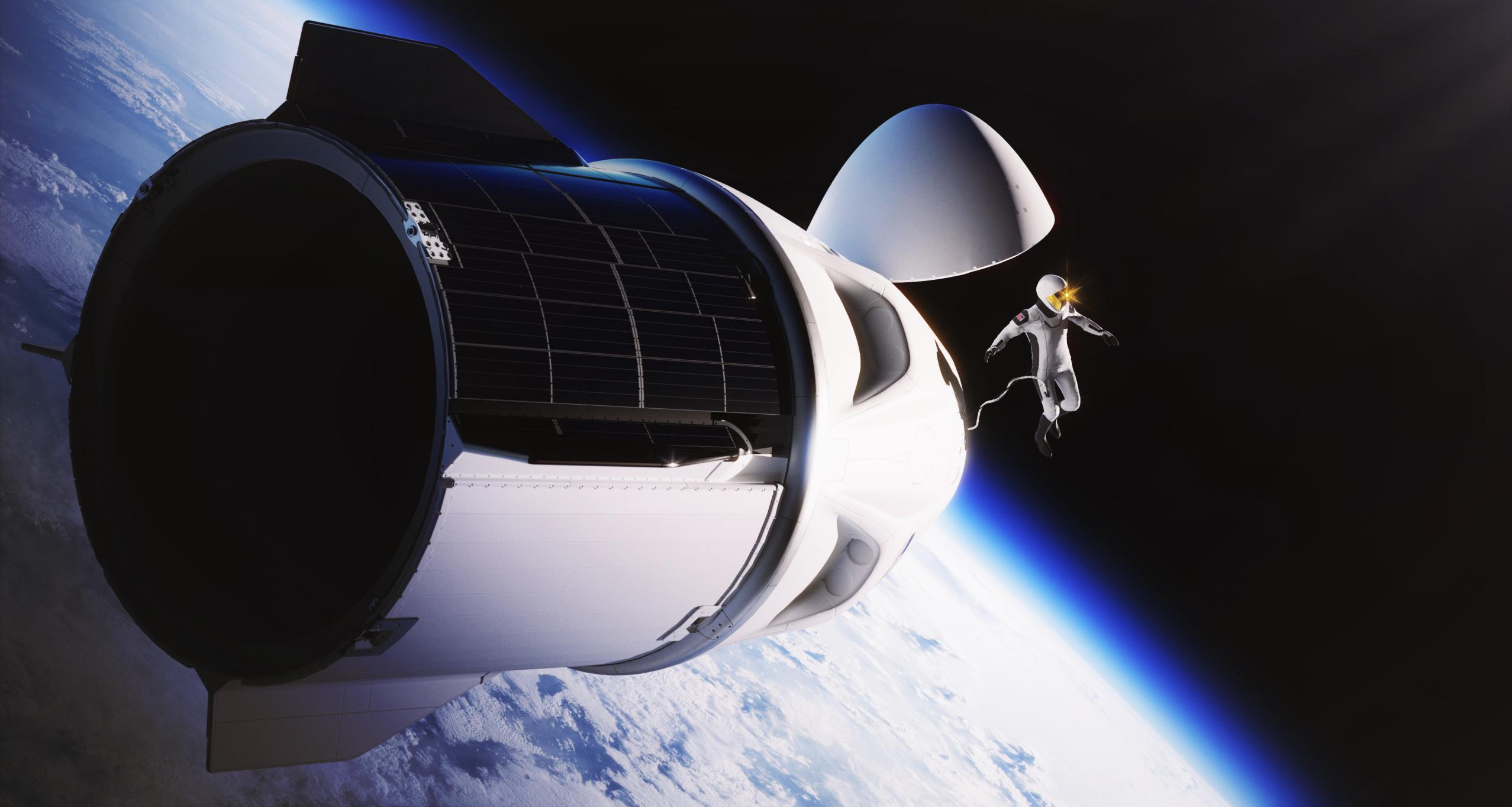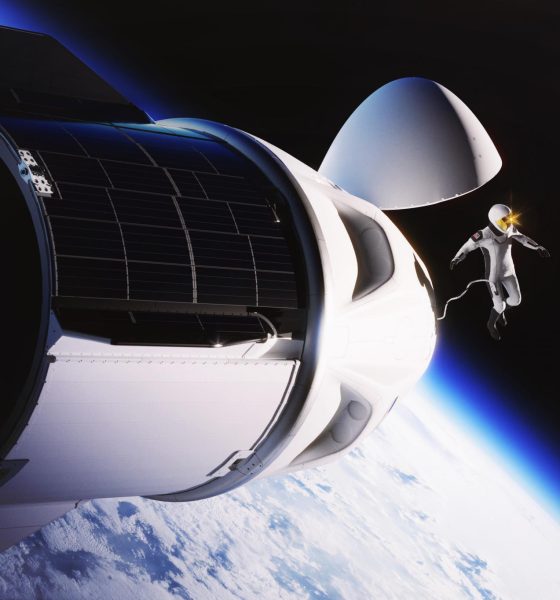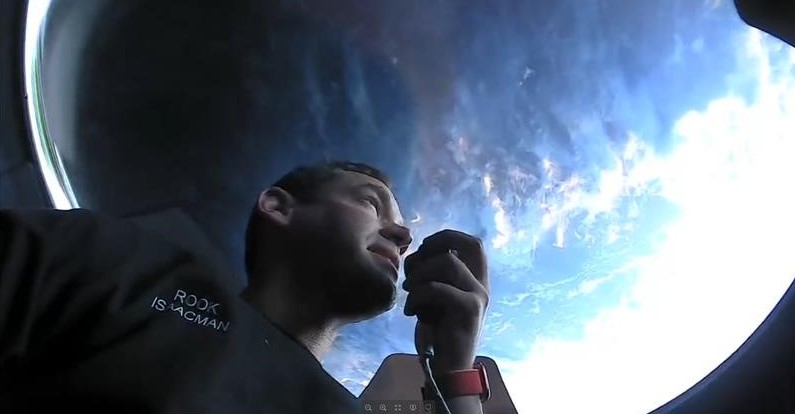

News
SpaceX, Polaris reveal plans to launch private astronauts higher than ever before
SpaceX and Inspiration4 creator Jared Isaacman have announced the Polaris Program, an initiative designed to carry the torch forward from Inspiration4 with even more ambitious private astronaut launches.
In September 2021, four astronauts became the first all-private crew to launch into orbit on a mission known as Inspiration4. First and foremost, I4’s goal was to uplift St. Jude’s Children’s Hospital and raise money for the fight against childhood cancer. It undeniably succeeded in that regard, raising almost a quarter of a billion dollars – about half of which came from public donations. The mission also catapulted SpaceX into the spotlight and appeared to mark the very beginning of the company’s private human spaceflight ambitions.
Combined with a separate program from Axiom Space, which has already booked four fully private astronaut missions to the International Space Station (ISS), the creation of the Polaris Program appears to confirm as much.

SpaceX now has six private Crew Dragon launches scheduled within the next few years. Polaris adds at least two missions, beginning as early as Q4 2022. Known as Polaris Dawn, the mission will be Crew Dragon’s second free-flyer mission after Inspiration4, meaning that the spacecraft will fly on its own for the full five-day duration. That gives SpaceX and the Polaris team far more freedom, freedom that they plan to take advantage of.
SpaceX aspires for Polaris Dawn to be the highest Earth orbit humans have traveled to since the 1960s and the furthest humans have been from the planet since the 1970s. NASA’s Apollo missions, which sent humans to the Moon, hold the all-time record, which Polaris Dawn will barely scratch the surface of. But in Earth orbit, the record – 1368 kilometers (850 mi) – was set by Gemini XI in September 1966.

With a drone ship landing for the booster, Falcon 9 is officially capable of launching around 12 metric tons (26,000 lb) to a circular 1400 km (870 mi) orbit. For unknown reasons, SpaceX and NASA have never acknowledged Crew Dragon’s mass at liftoff, but the first uncrewed vehicle weighed around 12 tons when it docked with the ISS. As such, it’s likely that Crew Dragon weighs at least 13 tons with a full crew of four astronauts. It’s possible that SpaceX can reduce Dragon’s mass or eke out more performance from Falcon 9 with a more aggressive booster landing further downrange, allowing the Polaris Dawn crew to narrowly beat the Gemini XI record.
If SpaceX went as far as expending a well-worn Falcon 9 booster for the mission, it’s likely that the mission could double or even triple the altitude record. If, like with Gemini XI, SpaceX launched Crew Dragon into an elliptical orbit, it could likely go even higher and easily beat the Gemini record while still recovering Falcon 9’s first stage.

Beyond the aspirational record-breaking altitude, Polaris Dawn will also debut SpaceX’s custom-built EVA (extra-vehicular activity) spacesuits, which are described as an overall upgrade to and replacement for the intra-vehicular (IVA) suits that already routinely protect NASA and private Dragon astronauts. The Polaris announcement is the first time SpaceX has publicly confirmed that it’s developing its own EVA suit. If it happens as planned, Polaris Dawn will mark the first private/commercial EVA in the history of spaceflight.
Finally, Polaris has plans for not one but three private astronaut launches. The second mission will follow in the footsteps of Polaris Dawn – likely with another Crew Dragon flight, though SpaceX and Polaris haven’t settled on a choice yet. The third mission, however, aims to be the first crewed launch of SpaceX’s next-generation Starship rocket and an essential pathfinder for DearMoon, a separate Starship launch contract that aims to send a crew of artists around the Moon as early as 2023.

News
Tesla starts showing how FSD will change lives in Europe
Local officials tested the system on narrow country roads and were impressed by FSD’s smooth, human-like driving, with some calling the service a game-changer for everyday life in areas that are far from urban centers.

Tesla has launched Europe’s first public shuttle service using Full Self-Driving (Supervised) in the rural Eifelkreis Bitburg-Prüm region of Germany, demonstrating how the technology can restore independence and mobility for people who struggle with limited transport options.
Local officials tested the system on narrow country roads and were impressed by FSD’s smooth, human-like driving, with some calling the service a game-changer for everyday life in areas that are far from urban centers.
Officials see real impact on rural residents
Arzfeld Mayor Johannes Kuhl and District Administrator Andreas Kruppert personally tested the Tesla shuttle service. This allowed them to see just how well FSD navigated winding lanes and rural roads confidently. Kruppert said, “Autonomous driving sounds like science fiction to many, but we simply see here that it works totally well in rural regions too.” Kuhl, for his part, also noted that FSD “feels like a very experienced driver.”
The pilot complements the area’s “Citizen Bus” program, which provides on-demand rides for elderly residents who can no longer drive themselves. Tesla Europe shared a video of a demonstration of the service, highlighting how FSD gives people their freedom back, even in places where public transport is not as prevalent.
What the Ministry for Economic Affairs and Transport says
Rhineland-Palatinate’s Minister Daniela Schmitt supported the project, praising the collaboration that made this “first of its kind in Europe” possible. As per the ministry, the rural rollout for the service shows FSD’s potential beyond major cities, and it delivers tangible benefits like grocery runs, doctor visits, and social connections for isolated residents.
“Reliable and flexible mobility is especially vital in rural areas. With the launch of a shuttle service using self-driving vehicles (FSD supervised) by Tesla in the Eifelkreis Bitburg-Prüm, an innovative pilot project is now getting underway that complements local community bus services. It is the first project of its kind in Europe.
“The result is a real gain for rural mobility: greater accessibility, more flexibility and tangible benefits for everyday life. A strong signal for innovation, cooperation and future-oriented mobility beyond urban centers,” the ministry wrote in a LinkedIn post.
News
Tesla China quietly posts Robotaxi-related job listing
Tesla China is currently seeking a Low Voltage Electrical Engineer to work on circuit board design for the company’s autonomous vehicles.

Tesla has posted a new job listing in Shanghai explicitly tied to its Robotaxi program, fueling speculation that the company is preparing to launch its dedicated autonomous ride-hailing service in China.
As noted in the listing, Tesla China is currently seeking a Low Voltage Electrical Engineer to work on circuit board design for the company’s autonomous vehicles.
Robotaxi-specific role
The listing, which was shared on social media platform X by industry watcher @tslaming, suggested that Tesla China is looking to fill the role urgently. The job listing itself specifically mentions that the person hired for the role will be working on the Low Voltage Hardware team, which would design the circuit boards that would serve as the nervous system of the Robotaxi.
Key tasks for the role, as indicated in the job listing, include collaboration with PCB layout, firmware, mechanical, program management, and validation teams, among other responsibilities. The role is based in Shanghai.
China Robotaxi launch
China represents a massive potential market for robotaxis, with its dense urban centers and supportive policies in select cities. Tesla has limited permission to roll out FSD in the country, though despite this, its vehicles have been hailed as among the best in the market when it comes to autonomous features. So far, at least, it appears that China supports Tesla’s FSD and Robotaxi rollout.
This was hinted at in November, when Tesla brought the Cybercab to the 8th China International Import Expo (CIIE) in Shanghai, marking the first time that the autonomous two-seater was brought to the Asia-Pacific region. The vehicle, despite not having a release date in China, received a significant amount of interest among the event’s attendees.
Elon Musk
Elon Musk and Tesla AI Director share insights after empty driver seat Robotaxi rides
The executives’ unoccupied tests hint at the rapid progress of Tesla’s unsupervised Robotaxi efforts.

Tesla CEO Elon Musk and AI Director Ashok Elluswamy celebrated Christmas Eve by sharing personal experiences with Robotaxi vehicles that had no safety monitor or occupant in the driver’s seat. Musk described the system’s “perfect driving” around Austin, while Elluswamy posted video from the back seat, calling it “an amazing experience.”
The executives’ unoccupied tests hint at the rapid progress of Tesla’s unsupervised Robotaxi efforts.
Elon and Ashok’s firsthand Robotaxi insights
Prior to Musk and the Tesla AI Director’s posts, sightings of unmanned Teslas navigating public roads were widely shared on social media. One such vehicle was spotted in Austin, Texas, which Elon Musk acknowleged by stating that “Testing is underway with no occupants in the car.”
Based on his Christmas Eve post, Musk seemed to have tested an unmanned Tesla himself. “A Tesla with no safety monitor in the car and me sitting in the passenger seat took me all around Austin on Sunday with perfect driving,” Musk wrote in his post.
Elluswamy responded with a 2-minute video showing himself in the rear of an unmanned Tesla. The video featured the vehicle’s empty front seats, as well as its smooth handling through real-world traffic. He captioned his video with the words, “It’s an amazing experience!”
Towards Unsupervised operations
During an xAI Hackathon earlier this month, Elon Musk mentioned that Tesla owed be removing Safety Monitors from its Robotaxis in Austin in just three weeks. “Unsupervised is pretty much solved at this point. So there will be Tesla Robotaxis operating in Austin with no one in them. Not even anyone in the passenger seat in about three weeks,” he said. Musk echoed similar estimates at the 2025 Annual Shareholder Meeting and the Q3 2025 earnings call.
Considering the insights that were posted Musk and Elluswamy, it does appear that Tesla is working hard towards operating its Robotaxis with no safety monitors. This is quite impressive considering that the service was launched just earlier this year.








